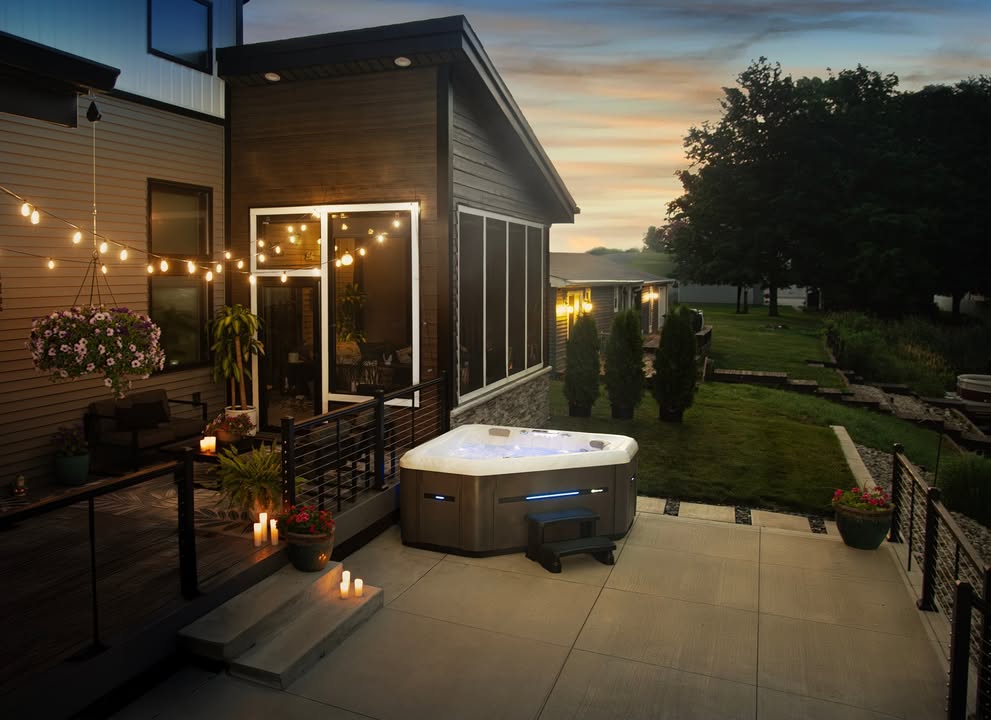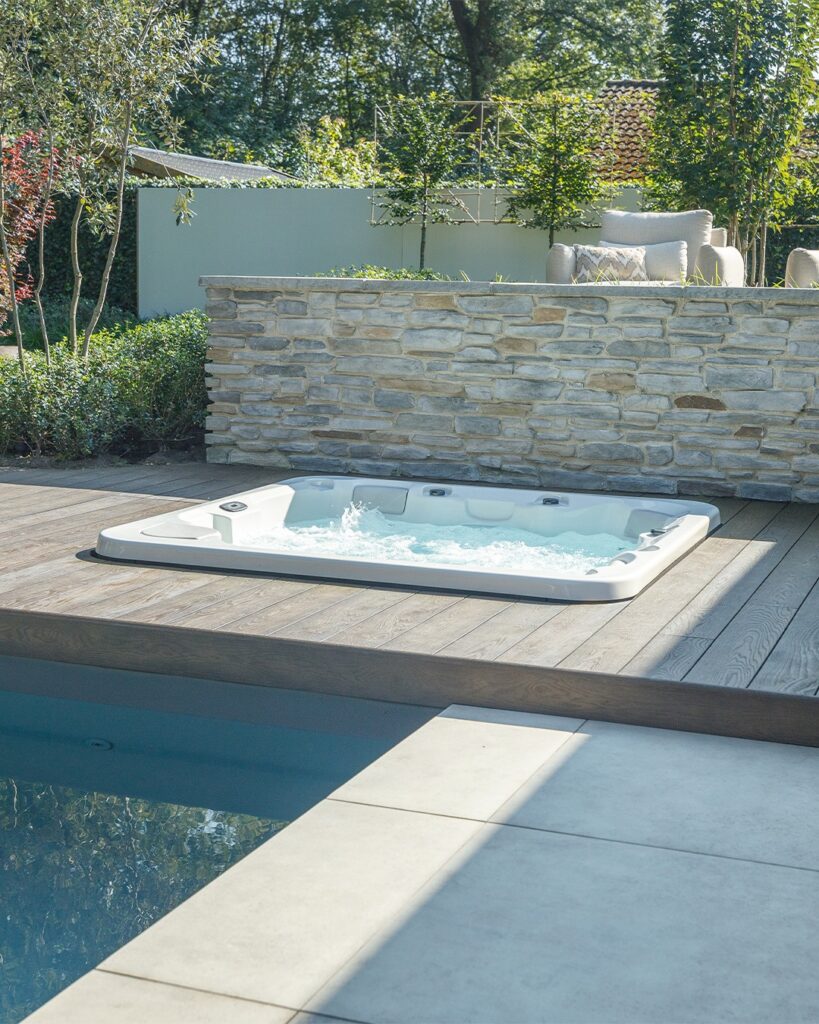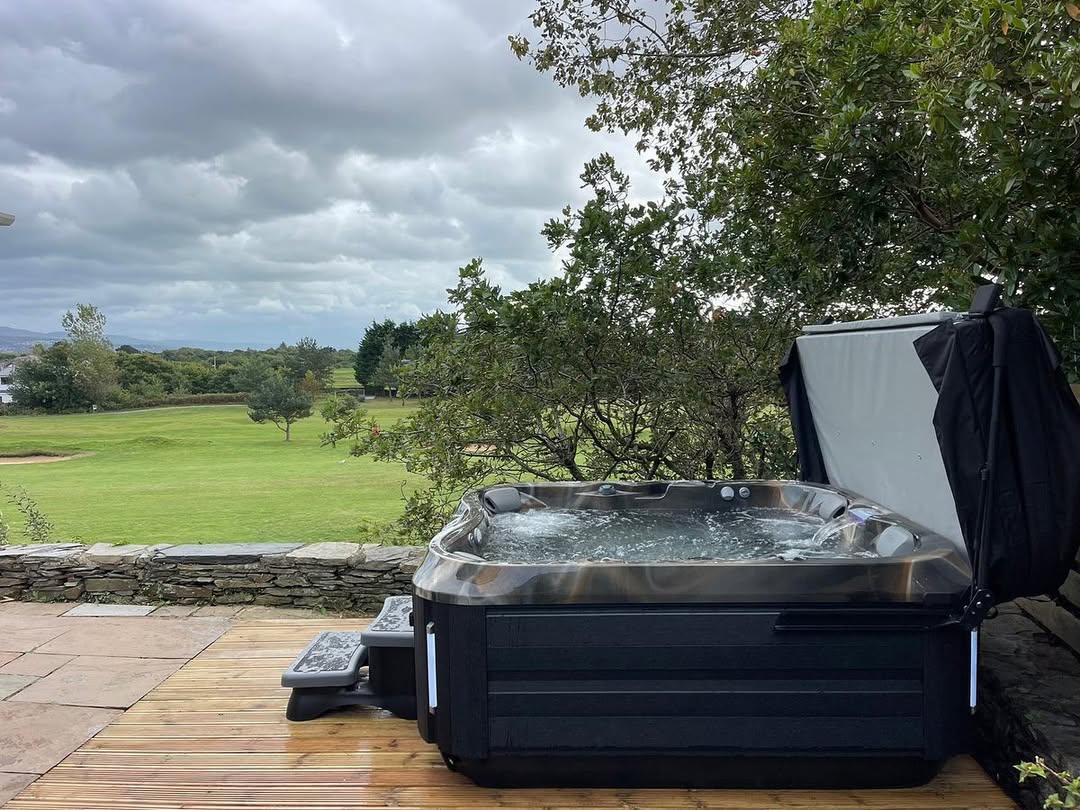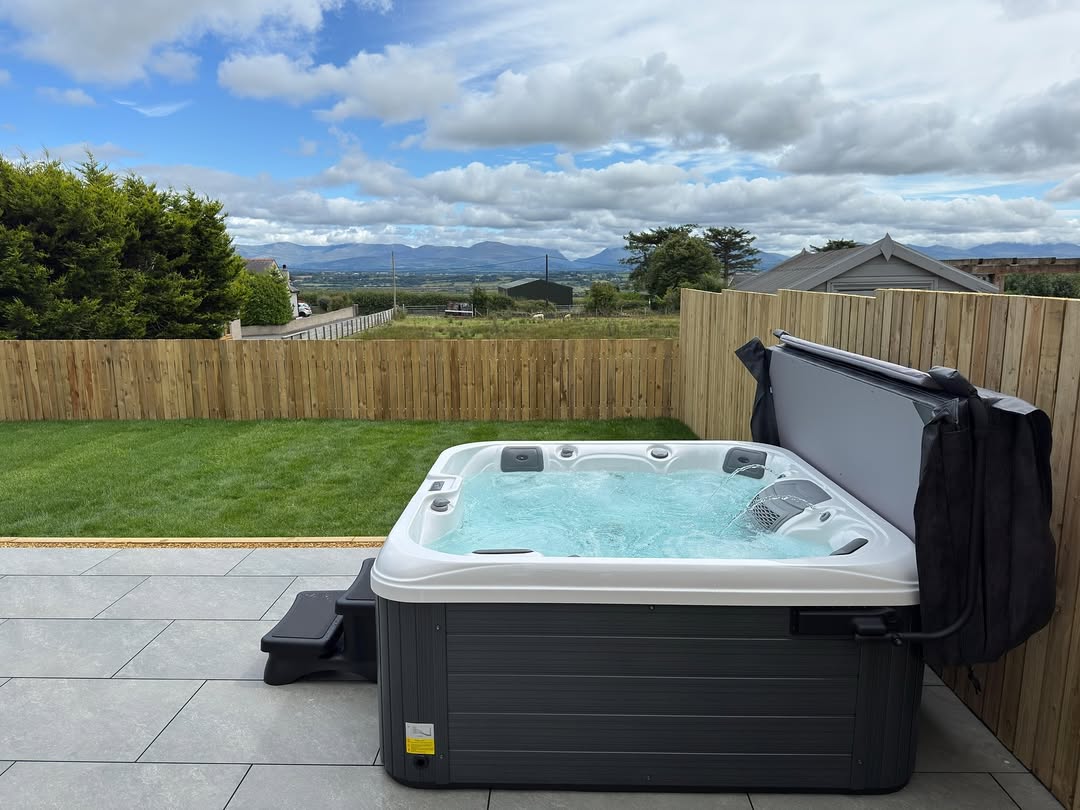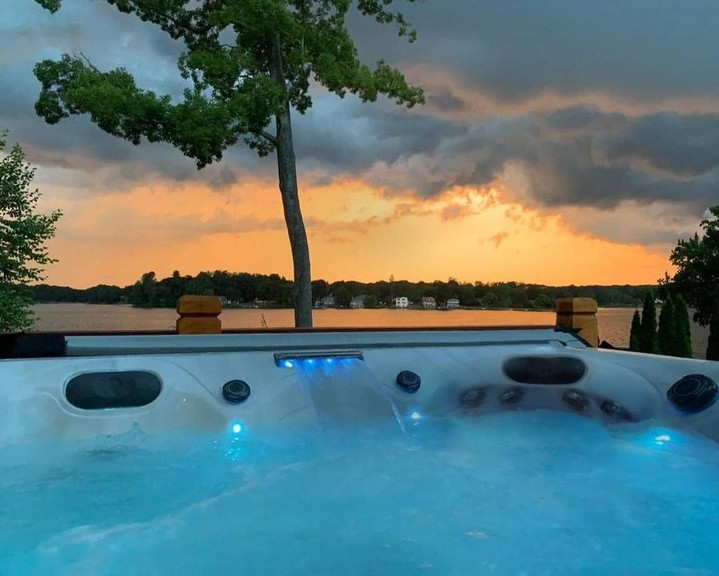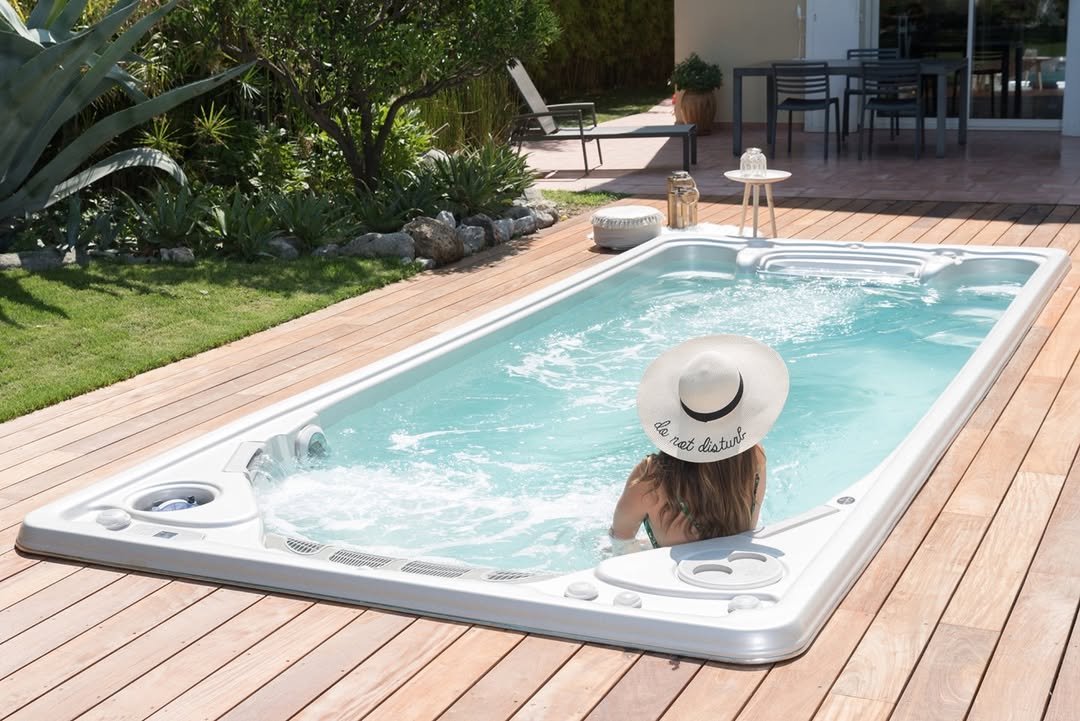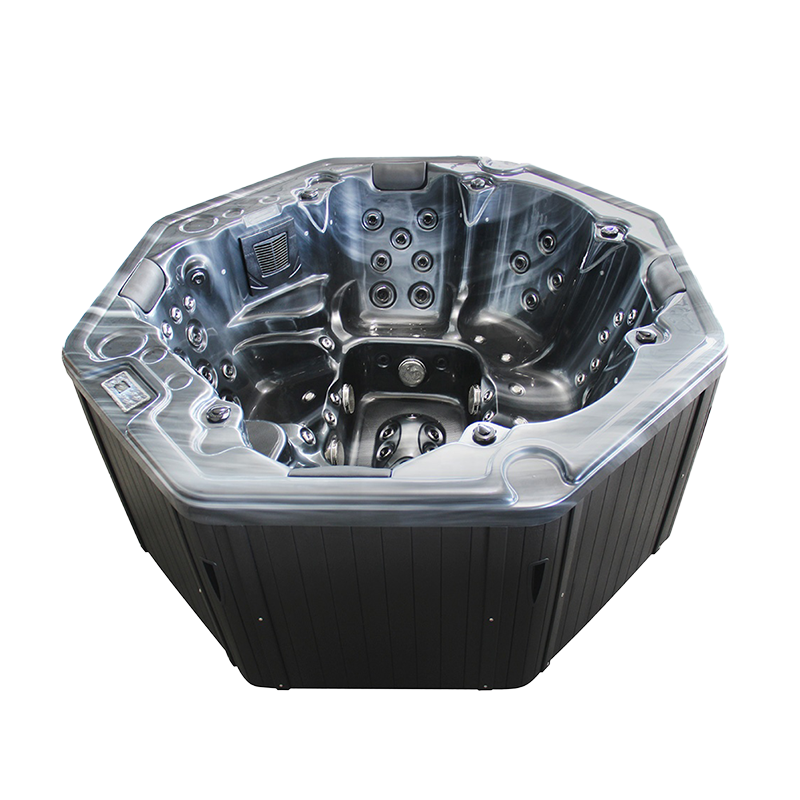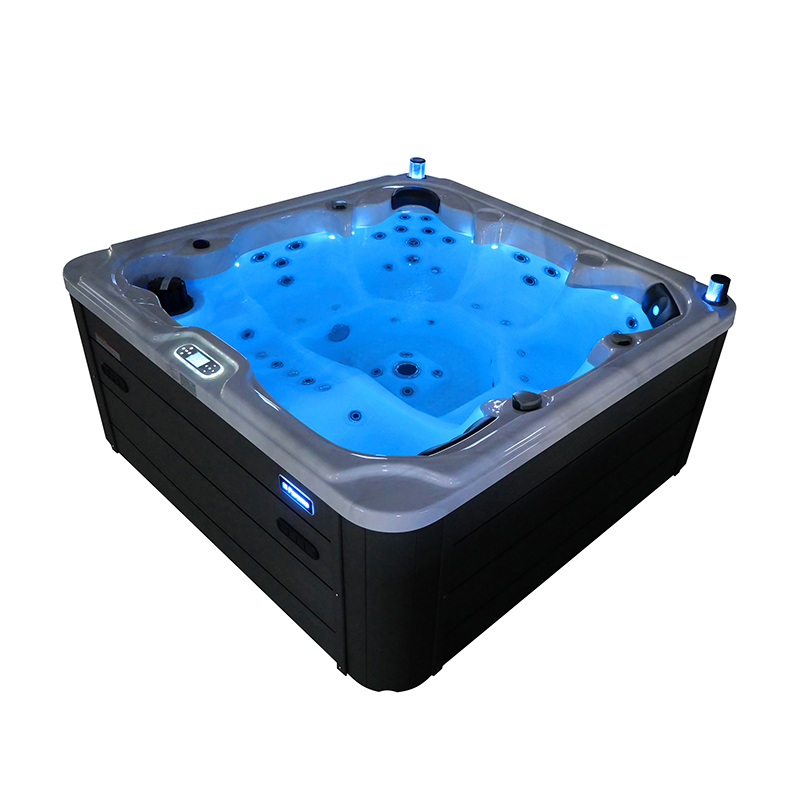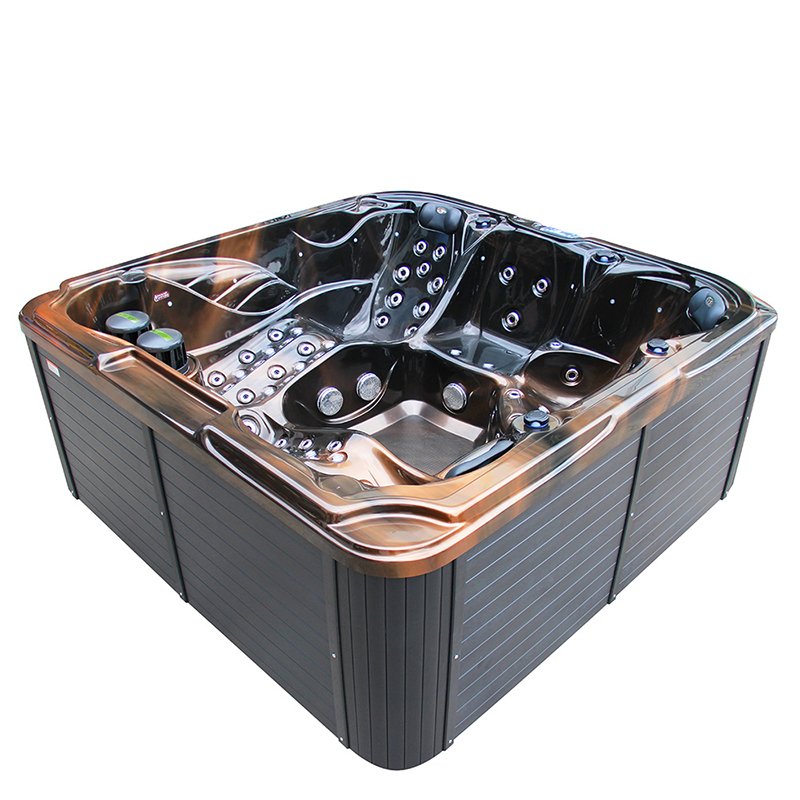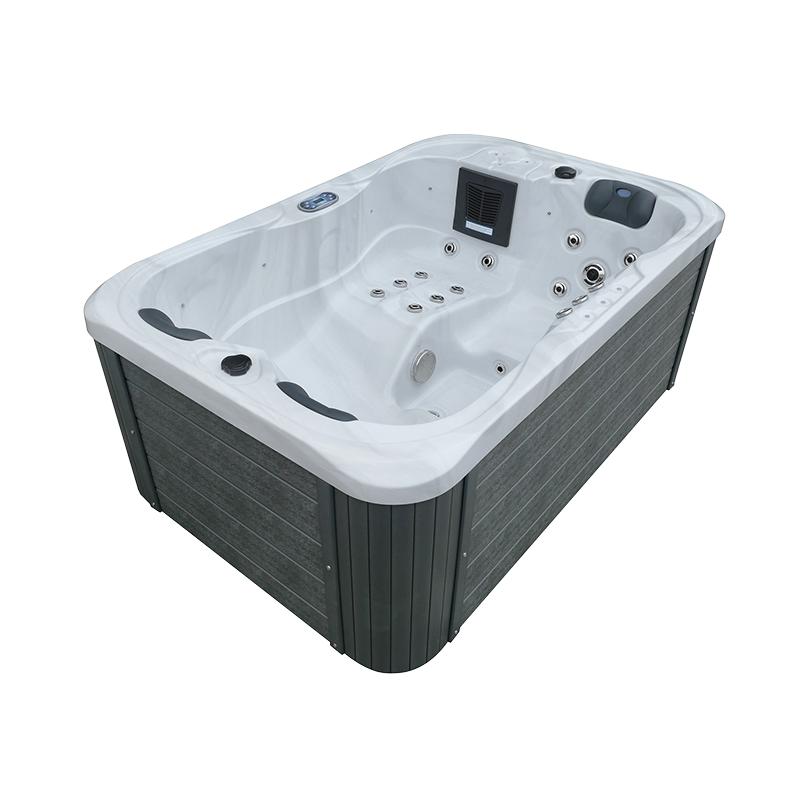When you begin researching hot tubs, you’ll encounter a myriad of terms like Jacuzzi, hot tub, spa, therapy tub, swim spa, and jetted tub. These terms are often used interchangeably, leaving many confused about their actual differences. While some brands may use these terms loosely, it’s essential to understand that not all these names represent the same thing.
This article aims to clarify the distinctions between various types of water tubs, including hot tubs, Jacuzzis, spas, swim spas, and more. By the end, you’ll have a clearer understanding of what you’re looking for when considering purchasing one of these luxury water features.
Jacuzzi vs. Hot Tub: Are They the Same?
The term “Jacuzzi” is frequently confused with “hot tub,” but they are not synonymous. In fact, Jacuzzi is a brand name, just like how Kleenex is often used to describe tissues. Jacuzzi is a specific manufacturer of hot tubs, while “hot tub” is a general term for a type of water vessel designed for relaxation, often equipped with jets for massage and hydrotherapy.
The Jacuzzi brand has become so synonymous with hot tubs that people often mistakenly use the term “Jacuzzi” to refer to any hot tub. However, not all hot tubs are Jacuzzis. Many other reputable brands, such as Master Spas, Hot Spring, Marquis, Sundance, and Bullfrog, offer similar products with distinct features.
Why Is There Confusion Between Jacuzzi and Hot Tubs?
The confusion stems from the historical significance of the Jacuzzi brand. The company’s legacy as a leader in the hot tub and whirlpool bath market has ingrained its name into popular culture. In the 1950s, the Jacuzzi family created a hydrotherapy pump to help alleviate the pain of rheumatoid arthritis, which led to the development of the modern hot tub.
By the 1960s, the Jacuzzi brand introduced the integrated whirlpool bath, which became the precursor to the hot tubs we know today. The brand’s association with hot tubs is so strong that many people mistakenly refer to all hot tubs as “Jacuzzis.”
Despite this confusion, it’s crucial to distinguish between the Jacuzzi brand and the general category of hot tubs, which encompasses a wide range of other brands and models.
Spas vs. Hot Tubs: What’s the Difference?
While the terms “spa” and “hot tub” are often used interchangeably, they technically refer to different types of water structures. A “spa” typically refers to an in-ground water feature, often built into the landscape, which might be connected to a swimming pool. These spas are designed to offer relaxation through massaging jets, but they are more permanent installations that are integrated with the pool’s plumbing.
On the other hand, hot tubs are stand-alone units that are either placed above ground or partially buried in the ground. They are self-contained with their own plumbing and heating systems. In some countries, such as New Zealand, Australia, and parts of the Southern United States, the term “spa” is commonly used to describe what many people call a hot tub.
In short, while all spas can be hot tubs, not all hot tubs are spas. The distinction lies in their design, installation, and often the context in which they are used.
What Is a Swim Spa and How Is It Different from a Hot Tub?
A swim spa is another distinct type of water tub. It may look similar to a hot tub, but it serves a different purpose. A swim spa is typically longer and rectangular in shape, designed to allow users to swim in place by creating a strong current that resists their movement. This feature makes swim spas ideal for exercise, rehabilitation, and recreational swimming in a compact space.
Swim spas often have jets and seating areas, similar to a hot tub, but they are deeper and larger to accommodate swimming. While hot tubs are generally used for relaxation and hydrotherapy, swim spas offer both relaxation and the option for physical activity, making them versatile for fitness enthusiasts.
In conclusion, a swim spa combines the benefits of a hot tub and a pool, allowing for both exercise and relaxation in the same unit. Hot tubs, by contrast, are more suited to those seeking an intimate space for hydrotherapy and socializing.
Jetted Tub vs. Hot Tub: What’s the Difference?
A jetted tub, often seen in hotel suites, is different from a hot tub in several ways. While both types of tubs feature jets designed to create a soothing massage effect, the primary difference lies in their function and setup. A jetted tub is typically an indoor, bathtub-style unit with jets, but it is drained after each use. This means that a jetted tub is like a traditional bathtub in that it is not designed for continuous water circulation, unlike hot tubs, which are built to maintain clean water with filtration systems.
Additionally, jetted tubs are not as deep as hot tubs and are typically not intended for the same kind of therapeutic experience. Hot tubs are designed to offer a more immersive experience with larger jets, seating areas, and temperature control. Jetted tubs, while providing some therapeutic benefits, are primarily intended for use as a regular bathtub.
Therapy Tubs: Are They the Same as Hot Tubs?
“Therapy tubs” are specialized types of hot tubs designed for more utilitarian purposes, such as rehabilitation or muscle recovery. These tubs are often used by professional athletes and medical professionals to promote healing or alleviate pain. Unlike regular hot tubs, therapy tubs are usually built from stainless steel and are less insulated to allow for quick adjustments in water temperature.
These tubs are not typically designed for relaxation or socializing; their primary focus is therapeutic benefits. They may feature powerful jets and cooling systems for alternating between hot and cold therapy. While hot tubs can offer therapeutic benefits, therapy tubs are more specialized for muscle recovery and rehabilitation.
Soaking Tubs vs. Hot Tubs: Understanding the Difference
A soaking tub is a type of bathtub designed specifically for soaking in warm water. Unlike hot tubs, which are often equipped with jets and are intended for relaxation and hydrotherapy, soaking tubs lack these features. Soaking tubs are simply large bathtubs that allow users to immerse themselves in water for an extended period. They are typically found in indoor bathrooms and are ideal for those who want to enjoy a quiet, relaxing soak.
While some hot tubs may function similarly to soaking tubs, the key difference lies in the added features of hot tubs, such as jets and heating systems that maintain the water at a consistent temperature.
Inflatable Tubs: A Budget-Friendly Alternative to Hot Tubs
Inflatable hot tubs offer a more affordable and portable option for those who want to enjoy the benefits of a hot tub without the high price tag. These inflatable tubs can be set up anywhere with enough space and are ideal for those who do not want a permanent installation. While inflatable tubs typically have fewer features than more expensive models, they still offer massage jets and can provide a relaxing experience.
However, inflatable tubs are generally smaller, less durable, and less insulated compared to more traditional hot tubs, making them better suited for short-term use or casual users.
Which Hot Tub Is Right for You?
With so many types of hot tubs, spas, and water tubs available on the market, it can be overwhelming to choose the right one. The best hot tub for you depends on your specific needs, whether you are looking for a therapeutic experience, a social space for friends and family, or a budget-friendly option for relaxation. Consider factors such as size, features, portability, and intended use before making your decision.
Comparison Table: Hot Tub, Jacuzzi, Spa, Swim Spa, and Jetted Tub
To further clarify the distinctions between the different types of water tubs, here’s a comparison table that breaks down the key features of each:
| Особенность | Джакузи | Jacuzzi | Spa | Swim Spa | Jetted Tub | Therapy Tub |
|---|---|---|---|---|---|---|
| Тип | Standalone unit, often above ground | Brand of hot tub | In-ground water feature, often part of pool | Larger, deeper, with current for swimming | Typically indoors, with jets | Specialized for muscle recovery |
| Primary Use | Relaxation, hydrotherapy | Brand-specific hot tubs | Relaxation, part of pool system | Swimming, exercise, relaxation | Hydrotherapy and relaxation | Muscle recovery, pain relief |
| Самолеты | Present in most models | Present in all Jacuzzi models | May or may not have jets | Has jets and swimming current | Jets for massaging effect | Powerful jets for therapeutic use |
| Размер | Varies, typically 4-8 people | Varies, typically 4-8 people | Often smaller, typically built into ground | Larger, can accommodate several users | Smaller, typically for one or two people | Typically designed for individual use |
| Установка | Above or partially buried in ground | Above or partially buried in ground | In-ground, part of pool system | Above ground, requires larger space | Installed indoors, often in bathrooms | Above ground, often in gyms or clinics |
| Water Maintenance | Regular cleaning, filtration system | Regular cleaning, filtration system | Shared plumbing with pool | Regular cleaning, filtration system | Drained after each use | Regular cleaning, quick drainage |
| Temperature Control | Yes, adjustable | Yes, adjustable | Yes, often shared with pool | Yes, adjustable | Yes, adjustable | Yes, adjustable |
| Purpose | Relaxation, socializing | Brand-specific relaxation and therapy | Relaxation, medicinal purposes | Exercise, fitness, relaxation | Short-term soaking and relaxation | Muscle recovery, pain relief |
This table should help clarify the different types of tubs, their features, and their intended uses. Whether you’re looking for a hot tub for relaxation, a Jacuzzi for luxury, or a swim spa for both exercise and leisure, there’s a perfect option for you.
FAQs About Hot Tubs and Jacuzzis
1. Is a Jacuzzi a brand name or a type of hot tub?
Jacuzzi is a brand name that has become synonymous with hot tubs, but it refers specifically to a company that manufactures hot tubs, not the type of tub itself.
2. Can I use a jetted tub for hydrotherapy?
While jetted tubs provide some therapeutic benefits, they are not as powerful or feature-rich as hot tubs designed for hydrotherapy, which have more advanced filtration and jet systems.
3. What’s the difference between a swim spa and a regular hot tub?
A swim spa is designed for both relaxation and exercise, offering a current that allows users to swim in place. A regular hot tub is primarily for relaxation and hydrotherapy, with jets for massage.
Conclusion: Choosing the Perfect Water Tub for Your Lifestyle
When it comes to selecting the right water tub, the choice truly depends on your lifestyle, preferences, and needs. Whether you’re drawn to the soothing jets of a hot tub for relaxation after a long day, the luxurious feel of a Jacuzzi to make a statement in your backyard, or the combination of exercise and leisure offered by a swim spa, there’s an option that fits your vision.
It’s important to consider factors like the space available for installation, the level of maintenance you’re prepared to handle, and what you truly want out of the experience. Do you prefer a social space for entertaining? Or are you looking for a solitary escape to unwind and rejuvenate? Are you focused on therapeutic benefits, or is it all about the ambiance?
Understanding the subtle differences between each type of tub will empower you to make a choice that aligns with your goals. From the sleek, modern design of an inflatable tub to the therapeutic power of a therapy tub used by professionals, the variety is vast. It’s not about settling for a generic option but finding the one that best matches your needs—whether that’s therapeutic relief, a fun social experience, or a combination of both.
As you consider your options, keep in mind that the right tub can become more than just a feature in your home; it can become a space where relaxation, fitness, and recovery meet seamlessly. The journey to finding the perfect tub may take some research, but once you choose the one that’s best for you, it will offer you years of enjoyment and well-being.

